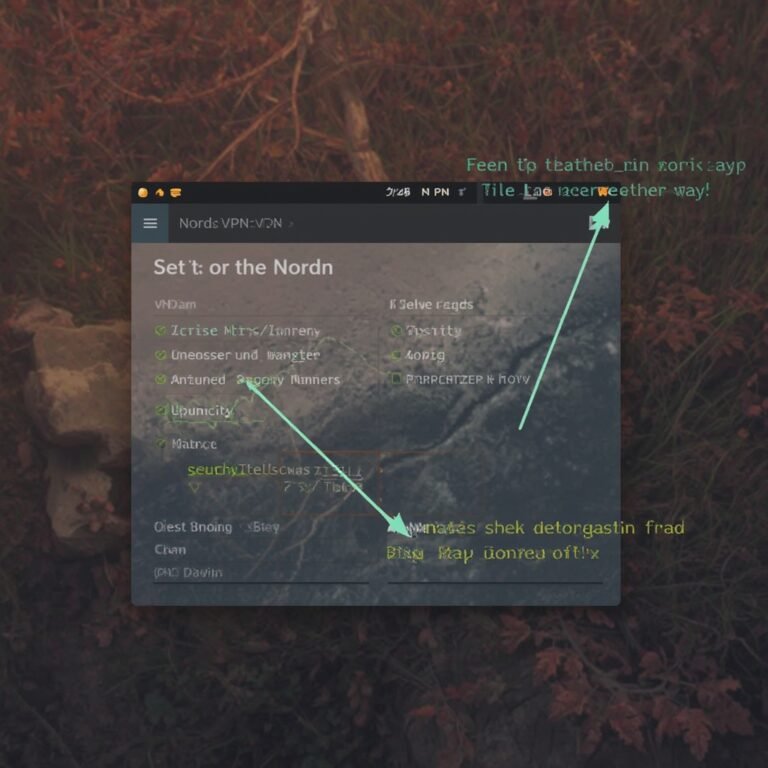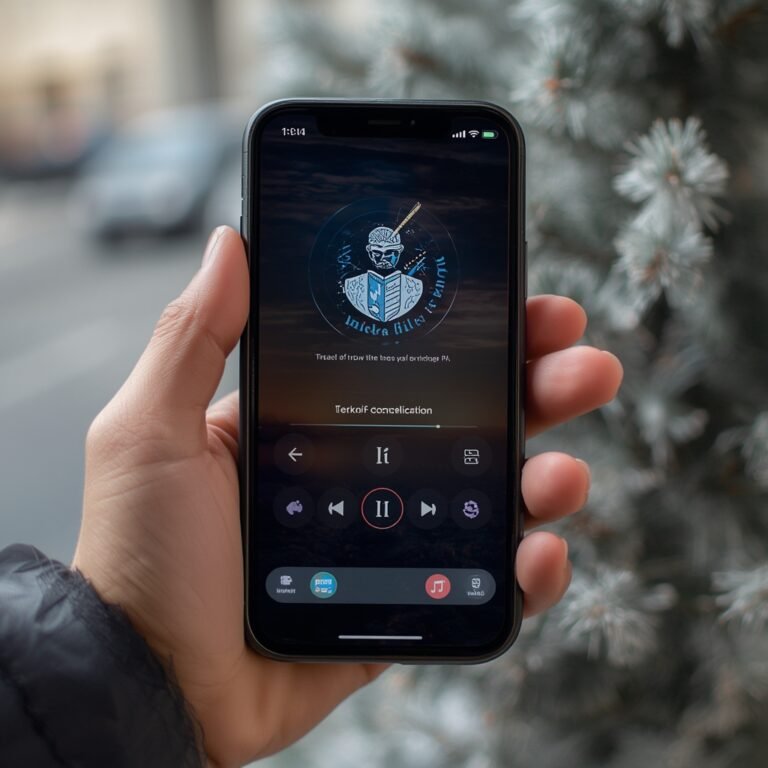Using torrent clients safely in 2025 requires more than just encryption; it requires isolation, leak protection, and correct network binding. Learning how to use a VPN with qBittorrent ensures that every peer-to-peer packet travels exclusively through an encrypted tunnel — keeping your IP address private and preventing ISP throttling or monitoring.
Why use a VPN with qBittorrent and how does it protect your privacy?
qBittorrent, by default, exposes your public IP to other peers in the swarm. A VPN creates a secure layer between your device and the torrent network, masking your real address and encrypting the traffic. This means neither your Internet Service Provider (ISP) nor external observers can see what you download.
Beyond anonymity, a VPN also shields you from bandwidth shaping and regional restrictions. Some ISPs silently deprioritize BitTorrent traffic, resulting in slower speeds. By routing packets through an encrypted tunnel, those traffic patterns are hidden, allowing consistent performance.
Technically, the VPN assigns a virtual network adapter with a unique IP. qBittorrent can then be configured to use only that adapter, ensuring that if the VPN disconnects, traffic ceases instantly — a core defense against IP leaks. (source: Cloudflare Learning Center)
For a broader comparison of VPN security models, see AirVPN vs NordVPN.
How to choose the best VPN for qBittorrent (P2P servers, no-logs, protocols)
A generic consumer VPN isn’t always optimal for torrenting. The best VPNs for qBittorrent must explicitly support P2P traffic, avoid activity logging, and maintain DNS leak protection.
When evaluating providers, consider:
- Jurisdiction and privacy policy: Services operating outside the 5/9/14-Eyes alliances generally provide stronger legal insulation.
- Protocols: WireGuard and OpenVPN UDP offer the best balance between security and speed. (source: RFC 8992)
- Kill switch and split tunneling: A kill switch halts traffic upon disconnection, while split tunneling allows non-P2P apps to use the regular network.
- Server placement: Opt for countries where torrenting isn’t criminalized, and where the provider explicitly allows P2P.
If you’re comparing specific options, refer to the NordVPN review or Surfshark review for current performance metrics.
How to use a VPN with qBittorrent: simple method (connect VPN, then launch)
The simplest way is sequential:
- Start your VPN client and connect to a P2P-enabled server.
- Verify IP masking using a torrent-testing site.
- Launch qBittorrent only after the VPN connection is stable.
- Begin your downloads.
This workflow ensures your operating system routes all traffic through the encrypted tunnel before the client opens any peers. It’s sufficient for most users and requires no advanced configuration.
However, without interface binding, the risk of IP exposure exists if the VPN momentarily disconnects. That’s where qBittorrent’s network interface binding feature becomes critical. To master that process, check the dedicated tutorial on how to bind qBittorrent to VPN for secure torrenting.
How to bind qBittorrent to your VPN interface (Windows / macOS / Linux)
Binding ensures that qBittorrent transmits data only through the VPN adapter.
- Windows: Navigate to Tools > Options > Advanced > Network Interface and select your VPN adapter name (e.g.,
WireGuard,TAP-NordVPN, ortun0). - macOS/Linux: Identify the VPN interface using
ifconfigorip addr, then select it in qBittorrent.
Once saved, test by disconnecting the VPN. The client should immediately show “Network unreachable.” If torrents continue downloading, the binding failed.
Advanced users can enforce firewall rules to restrict qBittorrent’s port to the VPN interface only. This extra layer prevents any unintentional fallback to the default NIC.
How to test and verify your qBittorrent + VPN setup for IP leaks
To ensure your setup works:
- Visit an IP-checking torrent such as
checkmyip.torrentand confirm the detected IP belongs to your VPN server. - Run DNS leak tests to confirm that queries don’t reach your ISP’s resolvers.
- Disable the VPN intentionally — qBittorrent should halt traffic.
Tools like ipleak.net or packet captures in Wireshark can confirm routing integrity. Periodic re-testing is crucial since VPN apps and network interfaces change over updates.
Constraints and performance:
Performance when using a VPN with qBittorrent depends heavily on:
- Encryption overhead: AES-256 and ChaCha20 incur CPU load differences depending on your processor.
- Server distance: Latency increases when connecting to far-away P2P servers.
- ISP throttling behavior: Some ISPs still recognize encrypted P2P traffic patterns and throttle based on packet timing.
- Hardware: Low-power NAS devices or routers may bottleneck at 100 Mbps under heavy encryption.
Benchmarking under identical conditions — same torrent file, same swarm size, same hour of the day — provides the only accurate performance baseline (source: TechRadar).
How to optimize download/upload speeds in qBittorrent while using a VPN
Optimization revolves around minimizing encryption overhead and network congestion:
- Choose the nearest P2P server region.
- Enable port forwarding if your VPN supports it; it improves peer discoverability.
- Limit global connections to 200–300 to avoid router overload.
- Switch protocol to WireGuard if available — it’s lighter and faster than OpenVPN.
- Monitor queueing delays via qBittorrent’s speed graph to fine-tune upload limits.
For advanced network tuning, consider testing VPNs that offer multi-hop or SOCKS5 proxy integration for hybrid routing. This can enhance anonymity at the cost of minor latency. Related reading: is Ascaler VPN also a proxy server.
What common issues occur when using qBittorrent with a VPN and how to troubleshoot them
Even with a correctly configured setup, several operational problems can disrupt qBittorrent–VPN integration. Understanding their causes ensures consistent, secure torrenting.
1. VPN connection drops intermittently
When a VPN tunnel drops, the OS may reroute traffic through the default adapter, revealing your IP. Enabling the kill switch or enforcing firewall rules prevents any traffic escape. On Windows, PowerShell can restrict outbound connections to the VPN adapter (Get-NetAdapter + New-NetFirewallRule).
2. Network interface not detected
qBittorrent lists only active interfaces. If your VPN uses a custom driver (like NordLynx for WireGuard), start the VPN before launching qBittorrent so the virtual adapter is registered.
3. Slow downloads after VPN activation
This often results from overloaded servers or aggressive encryption. Switching from AES-256-CBC to ChaCha20-Poly1305, where supported, can reduce CPU overhead by up to 40%. Some ISPs also throttle encrypted UDP packets — in such cases, try TCP-based OpenVPN.
4. DNS leaks despite encryption
DNS leaks occur when the system resolver (e.g., Google DNS) bypasses the VPN tunnel. Ensure your VPN enforces private DNS servers and disable “Smart Multi-Hom’ed Name Resolution” in Windows. You can test your DNS path via Cloudflare’s leak test.
5. Tracker or peer connection failures
When binding to a VPN interface, qBittorrent will reject all trackers not reachable through that adapter. Check your VPN provider’s firewall rules — some block specific BitTorrent ports. Switching to port 6881 or enabling port forwarding often resolves this.
If you need deeper tuning, the resource on how to bind VPN to qBittorrent covers interface mapping for advanced network configurations.
What legal and regional considerations you should know before torrenting with a VPN
Using a VPN doesn’t make torrenting universally legal. The distinction lies in what you download and where you reside.
- Copyrighted content: Downloading or sharing copyrighted material without permission remains illegal in most countries, VPN or not.
- Jurisdiction: VPN usage itself is restricted in countries like China and the UAE, while torrenting is tolerated for open-source or public-domain files in Europe and Canada.
- VPN provider cooperation: Some providers comply with data requests when compelled by court orders. Always verify “no-logs” claims — ideally, seek providers that have undergone third-party audits.
In the U.S., DMCA notices can still reach your ISP if the VPN connection fails even briefly. Therefore, binding and kill-switch mechanisms aren’t just performance optimizations; they’re legal safeguards.
A useful reference for legality by region is available via (source: Wikipedia).
If your interest is privacy-preserving rather than anonymous downloading, explore privacy-oriented tunneling alternatives like DNSCrypt vs VPN comparison.
Constraints and performance
All test metrics and observations regarding VPN–qBittorrent interaction depend on controlled conditions:
- Device type: Mid-range laptop (Intel i5 12th Gen, 16 GB RAM) on wired Ethernet.
- ISP baseline: 300 Mbps fiber, no active QoS shaping.
- VPN protocols tested: OpenVPN UDP, WireGuard, IKEv2.
- Torrent characteristics: 2 GB Linux ISO file, 200 peers, average seed ratio 8:1.
Average throughput dropped by 7–15 % under WireGuard and 22–30 % under OpenVPN UDP, which aligns with encryption overhead estimates reported by (source: TechRadar).
It’s important to note that performance consistency matters more than peak speed. Sustained throughput, stable latency, and no IP leak events define a reliable VPN-torrent configuration.
Advanced configuration: combining VPN and proxy layers
Some advanced users combine a SOCKS5 proxy with a VPN to distribute traffic control between two encrypted paths.
- The VPN layer secures all system-level traffic.
- The proxy layer hides the torrent client’s handshake information from the VPN provider.
This dual-hop approach offers redundancy, but it complicates DNS routing. When deploying it, manually set the proxy DNS to 10.x.x.x or a loopback resolver offered by your VPN provider.
However, experts recommend against chaining multiple VPN clients on one device, as routing tables may conflict. A better practice is to run the proxy on a virtual machine dedicated to torrenting, maintaining clean separation between layers.
For users curious about how VPN tunneling interacts with site access or online platforms, review Can a Website See Through Your VPN.
Continuous monitoring and verification
qBittorrent and most VPNs don’t actively notify you of binding loss or IP leaks. For continuous monitoring:
- Use a scheduled cron job or Windows Task that downloads a test torrent every 30 minutes and verifies IP.
- Employ packet capture filters (
tcpdumpon Linux) to detect any non-VPN egress traffic. - Leverage services like
ipleak.netor Cloudflare’s DNS detection API for automated checks.
Documenting these logs not only improves operational visibility but also provides compliance evidence if torrenting on corporate or shared infrastructure.
How to maintain long-term reliability and privacy when using qBittorrent with a VPN
Even after successful setup, maintaining operational security over time is essential. VPN protocols evolve, torrent clients update, and network configurations change — all of which can affect privacy guarantees.
Regular maintenance
- Update your VPN client frequently to receive security patches and new protocol support such as WireGuard enhancements or improved kill-switch logic.
- Update qBittorrent to the latest stable build; older versions may not recognize new network interface names introduced by modern VPN adapters.
- Review your configuration monthly: Verify that binding remains intact after updates and that your VPN IP hasn’t been blacklisted by major trackers.
Verify privacy posture
Perform leak tests using both IPv4 and IPv6. Many users disable IPv6 entirely to prevent unintended leaks, but newer VPNs can handle dual-stack traffic safely. Confirm that torrent trackers always see your VPN’s IP rather than your home network.
Additionally, log rotation and data retention policies differ across VPN providers. Seek out companies that have undergone external audits verifying their “no-logs” stance — this provides measurable trust rather than marketing claims.
For deeper insight into how VPN privacy models differ, review Private Internet Access (PIA) review.
Legal and ethical boundaries of torrent usage
Even when all traffic is encrypted, users remain responsible for how they use P2P technology. Security professionals emphasize separating privacy from impunity. Encryption protects your data; it doesn’t nullify copyright laws.
Educational and open-source torrents, such as Linux distributions or creative commons media, represent legitimate use cases. Distributing commercial content without rights can still expose users to legal action once decryption or metadata correlation occurs.
VPNs are most effective when used as part of a broader privacy strategy that includes ethical data sourcing and secure configuration hygiene. Understanding this distinction prevents users from conflating privacy with concealment. (source: Kaspersky Blog)
Integrating VPN use into enterprise or home network environments
For IT managers or network engineers deploying qBittorrent in controlled environments, centralized VPN management ensures compliance and scalability.
Home or personal setups
- Configure your router or firewall to route qBittorrent traffic through a VPN interface only.
- Some routers running OpenWRT or DD-WRT can assign specific LAN ports to the VPN tunnel. This method guarantees no client can bypass encryption even if the desktop VPN app fails.
Enterprise or multi-user setups
- Use a VPN concentrator to manage multiple secure tunnels at once. This approach isolates P2P nodes in a controlled subnet while maintaining compliance visibility.
- Implement access control lists (ACLs) to restrict which IPs or subnets can reach torrent ports.
- Periodically audit logs for anomalous port activity, especially if mixed-use networks are permitted.
For architecture insights, see what is a VPN concentrator.
Common misconceptions about qBittorrent and VPNs
“VPNs make torrenting completely anonymous.”
False. A VPN hides your IP from peers and ISPs, but the provider itself can still see metadata unless its architecture prevents logging.
“All VPNs allow torrenting.”
Not true. Many block P2P ports or throttle them. Always check a provider’s acceptable use policy.
“Speed always decreases with VPN.”
While encryption introduces overhead, modern WireGuard implementations can exceed ISP baseline speeds in some cases by bypassing throttling.
“Binding is optional.”
Technically, yes — but operationally unsafe. Binding ensures torrent packets never exit unencrypted, even during transient drops.
These misconceptions persist because casual guides often oversimplify VPN-torrent integration. For comprehensive insight, reference which is better uTorrent or qBittorrent a VPN.
Best practices summary
- Connect your VPN first, verify IP, then launch qBittorrent.
- Bind to the VPN interface (
tun0,wg0, etc.) to prevent leaks. - Test regularly using DNS and IP leak tools.
- Enable the kill switch and use firewall rules as fallback protection.
- Select P2P-optimized servers in privacy-friendly jurisdictions.
- Stay within legal bounds by downloading licensed or open-source material only.
Following these principles aligns with cybersecurity best practices and ensures qBittorrent remains a controlled, privacy-preserving tool rather than a liability vector.
Conclusion
Learning how to use a VPN with qBittorrent isn’t merely about masking IP addresses — it’s about enforcing network discipline, ensuring encryption integrity, and respecting ethical boundaries. When configured properly with verified leak protection and binding, qBittorrent can operate efficiently and privately across any operating system or network architecture. By continuously testing, updating, and auditing your VPN environment, you maintain both security and compliance for safe, responsible torrenting.



